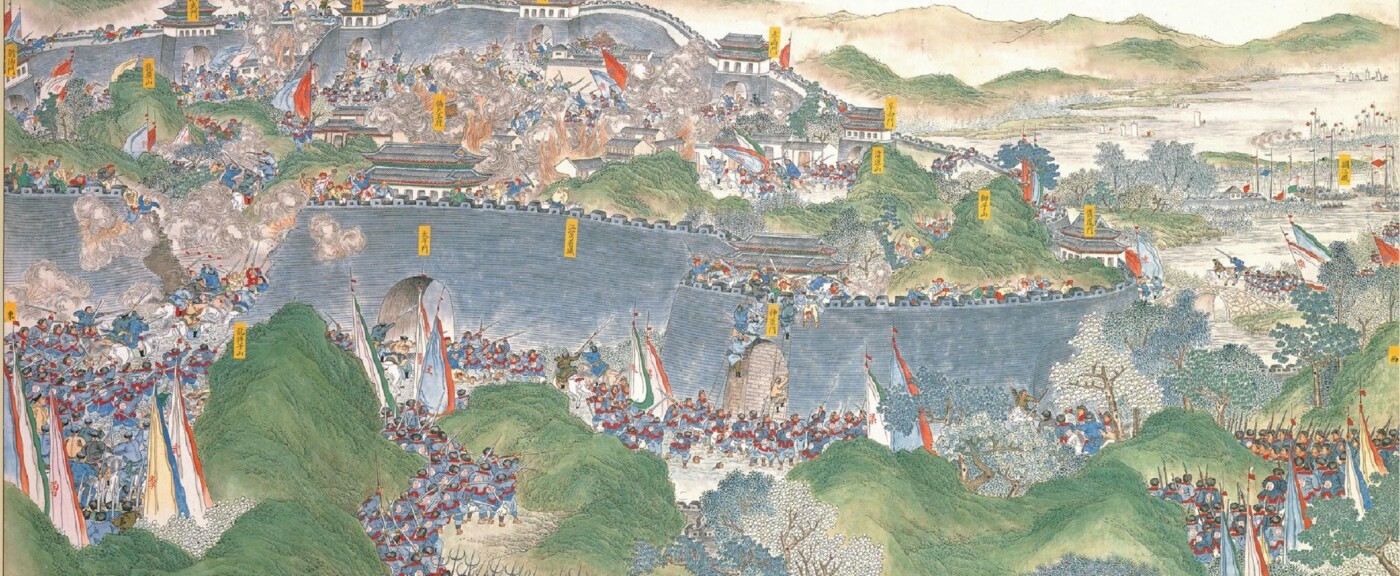Huan Jin, Fairbank Center Graduate Student Associate, explains the use of print propaganda during one of the most atrocious civil wars in human history.

The Taiping Civil War (1851–1864) led by “God’s Chinese Son,” Hong Xiuquan, and the “Son of Heaven,” the Xianfeng Emperor (1831–1861) was one of the most atrocious civil wars in human history. Intriguingly, it is also oftentimes lauded as the precursor of the modern Chinese Communist revolution (1949).
This war was not merely a political event, but also a literary event that drastically transformed Chinese culture, particularly in terms of cultural production and ideological contestation. Never before in Chinese history were texts produced and disseminated for propagandist purposes as extensively as they were during the mid-nineteenth century. Focusing on three extant Taiping placards preserved in the National Library of Australia, we can see how the Taipings used printing technology to spread their propaganda at the beginning stage of the Rebellion.
In 1852, two years after the uprising, Taiping troops left the frontier province, Guangxi, where the Rebellion started, and entered the south-central part of the country, Hunan province. Though their military attempt was thwarted, the Taipings for the first time extended their influence beyond Guangxi and Guangdong provinces. Zhang Dejian 張德堅 (fl. 1854), who was serving as an assistant inspector in Hubei province, observes that when the Taipings arrived at Changsha, they posted large placards along the streets in a display of Taiping ideology. Such an act, Zhang commented, was an ostentatious move to spread the message of the Rebellion. One year before, he recalled, the Taiping rebels only secretly recruited supporters, and the number of their followers was so small that “a few words on paper slips” would suffice to pass information between the rebels. Nevertheless, by 1854, at the time when Zhang was writing, the Taiping regime had conquered Hubei province and established their capital at Nanjing. Their placards were omnipresent in all the Taiping-controlled cities.

Zhang’s anxiety was not without a reason. Visually, the Taiping placards impress their viewers with remarkable large sizes and the elaborate patterns surrounding the text. Printed on large yellow paper, all the placards were co-authorized by the Eastern King Yang Xiuqing 楊秀清 (1823–1856) and the Western King Xiao Chaogui 蕭朝貴 (1820–1852). A placard could be as large as 15 square feet. Most likely, the Taipings had paper and woodblocks specifically designed to produce the placards.
The main content of a placard is placed within a solid, bold 25.5 x 68.4 inch inner frame. Surrounding that inner frame, there are patterns of water, clouds, dragons, and phoenixes situated within a 34.5 x 77.5 inch exterior solid frame. The two phoenixes at the top are symmetrically positioned in a flying gesture; on both the left and the right sides of the frame, there is a spiral dragon that seems to be ascending. At the bottom of the picture, clouds and water are drawn in bold lines indicating their dynamic quality. The austerity of the patterns reflects the Taiping aesthetics that rejects embellishment, and the images of nature and the auspicious legendary animals, instead of religious icons, vindicate the influence of traditional Chinese culture and the Taiping iconoclasm. Within the interior frame, the text is printed in the Song font, and the size of each character in the main text is 1 x 1 inch. All entitled “The Authentic Taiping Heavenly Kingdom Mandated by Heaven” (Zhen tianming Taiping tianguo 真天命太平天國), the placards premise the authority of their rhetoric upon the Genesis and Hong Xiuquan’s visionary journey in Heaven. By vilifying the Manchu rulers to be snake demons who will eliminate the race of Han Chinese people, the imagery of the placards intends to evoke fear and anxiety from the masses and call them to join the Rebellion.


